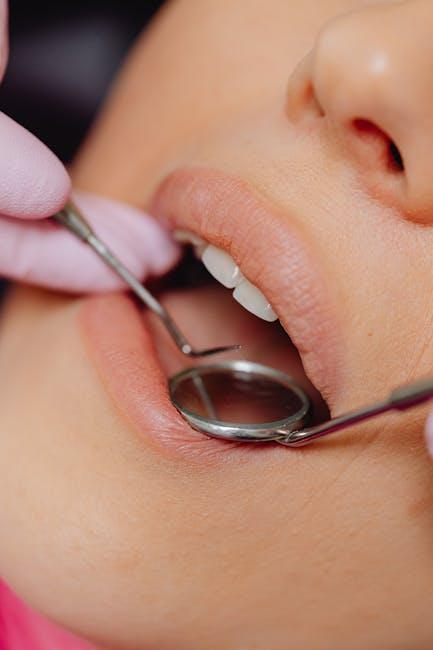
Emergency Dental Visits Take A Bite Out Of Everyone’s Wallets – Texas A&M
When a sudden toothache or dental injury strikes, the last thing on your mind is likely the cost involved. Unfortunately, emergency dental visits can significantly strain finances across Texas and beyond. According to recent research from Texas A&M University, the financial burden of unplanned dental care is on the rise, affecting individuals and families indiscriminately. In this comprehensive article, we’ll explore the causes behind these rising costs, offer practical advice on how to manage dental emergencies affordably, and dive into expert insights from Texas A&M’s dental health studies.
Understanding the True Cost of Emergency Dental Visits
Emergency dental care often includes urgent treatments such as extraction of a damaged tooth, root canals, repairing broken crowns, or treating severe infections. Unlike routine dental checkups, these treatments are unplanned and typically more expensive due to their urgency and complexity.
Why Are Emergency Dental Visits Expensive?
- Urgency and Timing: Many emergencies demand after-hours care, which often carries higher fees.
- Complex Procedures: Emergency treatments might require specialized equipment, anesthesia, or sedation.
- Diagnostic Tests: X-rays and scans used to assess urgent problems add to the bill.
- Lack of Insurance Coverage: Many dental insurance plans limit coverage for emergencies.
These factors combine to create financial stress, especially for those without adequate dental insurance or savings. According to Texas A&M’s recent survey, emergency dental visits can cost an average of $500 to $1,200, depending on the nature of the problem and geographic location within Texas.
The Financial Impact of Emergency Dental Visits in Texas
Dental emergencies don’t discriminate by age, income, or location. Below is a summarized table highlighting common emergency dental treatments and their average cost ranges in Texas:
| Emergency Dental Treatment | Average Cost Range (TX) | Typical Recovery Time |
|---|---|---|
| Tooth Extraction | $150 – $600 | 1-2 weeks |
| Root Canal Therapy | $600 – $1,200 | 1-3 weeks |
| Emergency Dental Filling | $100 – $400 | Few days |
| Dental Crown Repair/Replacement | $800 – $1,500 | 2-3 weeks |
| Abscess Drainage & Antibiotics | $200 – $600 | 1-2 weeks |
Texas A&M’s Research Insights: Why Are Dental Emergencies Increasing?
According to dental health experts at Texas A&M, the rise in emergency dental cases is linked to several socio-economic factors:
- Deferred Routine Care: Many Texans postpone regular dental visits due to cost anxiety, which leads to undiagnosed and untreated problems evolving into emergencies.
- Poor Oral Hygiene: Inadequate dental care habits increase the risk of decay and infections.
- Lack of Access to Affordable Preventative Care: Rural and underserved communities in Texas face barriers to affordable dental services.
Texas A&M researchers emphasize that prevention and timely care could drastically reduce emergency cases, cutting costs and improving quality of life for many Texans.
Practical Tips to Avoid Costly Emergency Dental Visits
Protecting your dental health not only preserves your smile but also your wallet. Here are some practical steps recommended by Texas A&M dental specialists:
- Maintain a Consistent Oral Hygiene Routine: Brush twice daily, floss, and use mouthwash to prevent decay.
- Visit the Dentist Regularly: Annual or bi-annual checkups catch issues before they become emergencies.
- Protect Your Teeth: Wear a mouthguard when playing sports to prevent injuries.
- Avoid Harmful Habits: Limit sugary foods, avoid tobacco, and minimize excessive alcohol consumption.
- Know Your Insurance Coverage: Understand what your insurance covers regarding dental emergencies.
- Set Aside a Dental Emergency Fund: Saving even a small amount monthly can alleviate financial pressure when emergencies occur.
Case Study: How One Texas Family Managed a Dental Emergency Without Breaking the Bank
Meet the Garcias, a family from Houston, TX, who faced an unexpected dental emergency when their 10-year-old daughter fractured a tooth during a playground accident:
- Challenge: Immediate treatment was needed to repair the tooth and avoid infection. Insurance covered only part of the cost.
- Solution: The family contacted a Texas A&M affiliated dental clinic that offers sliding scale fees and payment plans for emergency visits.
- Outcome: The dental repair was completed within 48 hours. They paid 40% less than the average emergency visit cost, avoiding expensive hospital ER charges.
This experience underscores the importance of knowing affordable dental care resources and seeking care promptly.
First-Hand Experience: When Emergency Strikes, What to Expect
Most Texans confronted with a dental emergency report feeling overwhelmed and unsure about next steps. Here’s a quick breakdown of what to expect and how to prepare:
- Assessment: An emergency dentist will evaluate the problem through visual inspection and usually X-rays.
- Treatment Plan: Immediate pain relief and addressing the cause (e.g., extraction, filling).
- Cost Explanation: Before treatment, most providers will give an estimate to help you anticipate charges.
- Follow-Up Care: Post-treatment guidance and possible follow-ups to ensure proper healing.
Remember to ask about payment options or financial assistance programs upfront to avoid surprises.
Conclusion
Emergency dental visits undoubtedly take a bite out of wallets across Texas, but understanding the causes and being proactive can save you from steep bills and unnecessary stress. Research from Texas A&M highlights the critical role of prevention, routine care, and equitable access to affordable dental services in reducing emergency dental incidents. By following simple yet effective oral health habits, leveraging insurance wisely, and seeking care from trusted providers, you can protect your smile without compromising your financial well-being.
Don’t let a dental emergency catch you off guard—start today with better dental habits and be prepared for the unexpected.


